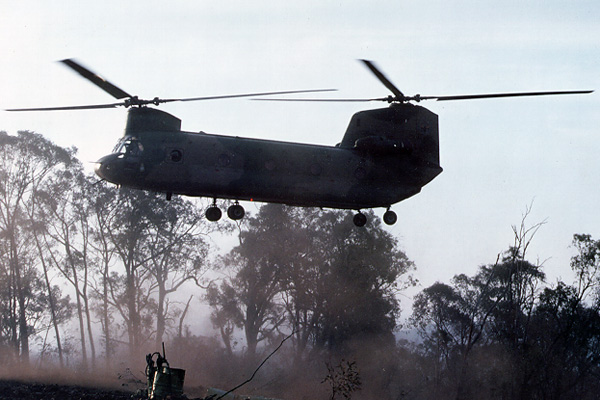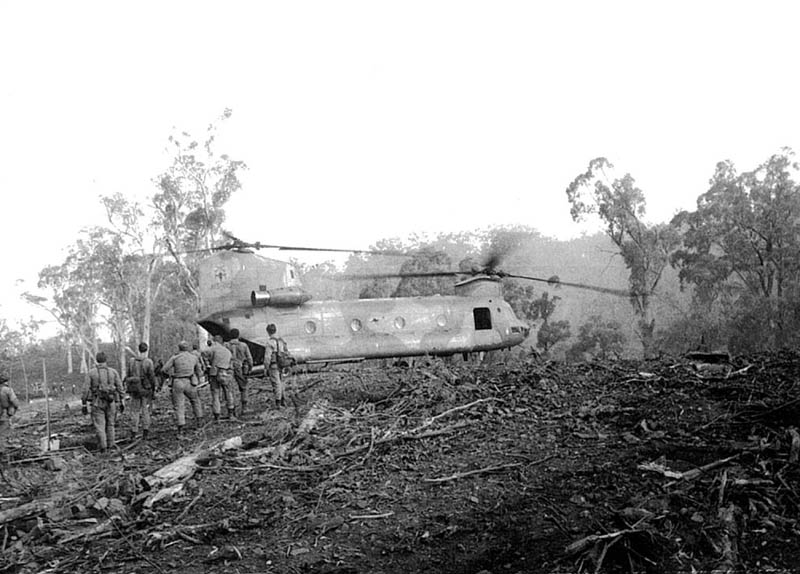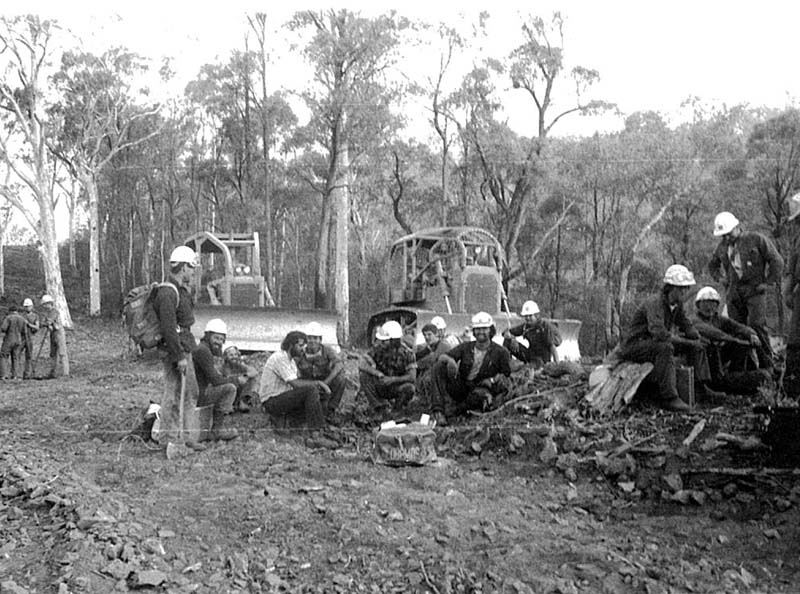Nug Nug Chinook
Bernie Evans (bio)
This article is based upon a conversation between Bernie and Richard Rawson in August 2018, and it is likely that it describes the first ever use of such a large helicopter in a wildfire control operation.
On the 17 February 1983, at the same time as the State was in terrible strife from the fires of 16 February (Ash Wednesday), a fire started in what was then the FCV District of Myrtleford, where Bernie Evans was the District Forester and, the way things worked at that time, he was also by right the "fire boss".
The fire started in Nug Nug and ran up the side of Mt Sugarloaf which is part of the Mt Buffalo complex.
“We had few people because most were away at other fires. It was a horrible place for a fire. Steep as a goat’s forehead and we had to figure a way of getting people in there.” I rang up Con Wood (at that time the FCV’s aviation expert, based in the Division of Forest Protection in Melbourne) and said we need a big chopper to ferry people in to this fire.”
Con’s reply was that there were no spare helicopters available but “I will get you a name in Canberra - and try to get a Chinook.” By this time the Military was fully invested and supportive of the suppression effort on the Victorian fires.
So Bernie rang Canberra and the response was immediate. “When do you want this Chinook and where?” “Today”, said Bernie.
So the FCV crew built a helipad on Mt Sugarloaf and the Chinook ferried people and supplies, including 44 gallon drums of diesel, up and down with ease.

RAAF Chinook at the Nug Nug fire
Mt Buffalo complex, February 1983
Source: B Rees
However, there was one face of the fire that was extremely difficult to get at. In those days Army crews at Bandiana were trained as firefighters by FCV staff, and from Bandiana a crew of about 20 soldiers turned up, and built by hand a 2-3 km long fire trail from top to bottom in extraordinarily difficult terrain. On sections they had to install rope lines to allow them to safely negotiate the slope.
It was also on this fire that the RAAF Hercules operating the MAFFS went very close to crashing into a rock face on the mountain, while dropping a load of retardant in a tight location.
Remote Fires
From the 1960s into the 1980s, at least, it was usual for most Forest Districts to have a fire trailer equipped with tools, food and camping gear to sustain a crew of about six. The crews would drive as close to the fire as they could and then walk as necessary to the fire and do whatever was required to control it. On some occasions crews would walk in and actually sleep at the fire overnight, perhaps inside the burn next to a burning log to keep warm. This sort of work was certainly not considered unusual for the times, with the crew being self-sufficient for about two to three days.

RAAF Chinook on helipad on 19/2/1983, with Army personnel from Bandiana
Source: B Evans

Myrtleford FCV crew on 19/2/1983 awaiting pickup by Chinook at end of shift
Source: B Evans